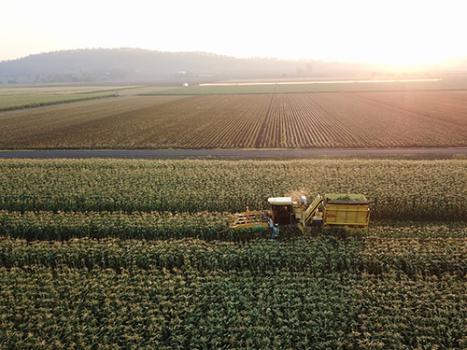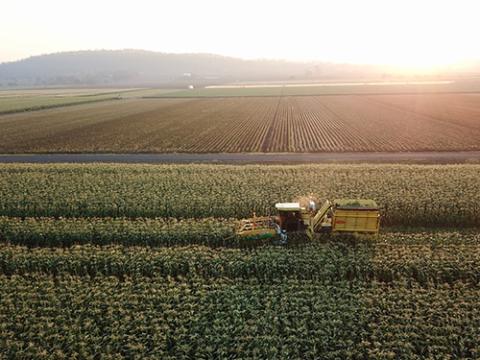Kalfresh will introduce the an automated sweet corn processing line with innovative X-ray technology. The processing line will allow Kalfresh to increase the sweet corn crop by 200ha a year, support new jobs and significantly increase regional business revenue.
Kalfresh is a vertically integrated agricultural company that grows, packs, processes and markets fresh produce directly to distribution centres and supermarkets in Australia and overseas. Kalfresh specialises in conventional and certified organic carrots, onions, pumpkin, green beans, grape, gourmet tomatoes, sweet corn, capsicums and baby capsicum.
Kalfresh farms more than 1600 hectares in five growing regions, Fassifern Valley, Lockyer Valley, Bowen, Stanthorpe and Darling Downs, to achieve a year round supply of geographic diversity and water security.
Kalfresh CEO Richard Gorman said the new infrastructure would allow Kalfresh to grow and cut sweet corn to meet the consumer trend for ready-to-eat, pre-cut vegetables, while also reducing food waste by using x-ray technology to better analyse the corn and utilise more of the crop to meet retail specifications.
Funded using a Rural Economic Development (RED) Grant, the project will include fully automated cob inspection, cutting and packing processes.
The project will help support up to seven jobs plus another 35 indirect positions, including agronomists, farm managers, machine operators, technicians, managers and quality assurance and sales staff.
Mr Gorman said like many industries, the vegetable industry was changing, with a consumer focus and trend towards ready-to-eat and ready-to-cook products. He said it was essential farming businesses responded to trends and consumer insights.
“As vegetable farmers and marketers we keep a constant eye on the market trends, both in Australia and internationally. We are also focused on ensuring our systems – from paddock to packet – are as efficient as they can be. These efficiencies ensure that we deliver produce to our customers as fast as possible, which means it’s as fresh as it can be,” Mr Gorman said.
“Another key focus for us is on how we can utilise the whole crop. Investment in technology, such as this new corn system, enables us to do this.”
Kalfresh processes its own vegetables, as well as those grown by farming partners, directly from the farm. Produce is then sold and transported to customers domestically and for export markets. This model ensures smaller growers will also benefit from this new infrastructure.
“After 27 years the Kalfresh vision remains the same; to unite local growers under one brand, market regional produce collectively and provide customers with a one-stop shop for their produce needs,” Mr Gorman said.
He said the project was likely to support rural economic development of three regional communities suffering the impacts of drought, specifically Fassifern, Bowen and Clintonvale, create increased return for growers and improve their competitiveness domestically and internationally.
Mr Gorman said the project would create job opportunities for young locals in innovation, including food processing and manufacturing technology that required mechatronic, electrical and engineering skills.
“This will allow younger residents to explore a broad range or roles across the whole agricultural supply chain and work with technology that fosters new and efficient methods to value add raw produce,” he said.
“At the heart of the sweet corn line automation project is a desire to diversify and strengthen regional farming communities.”
The RED Grant program offers emerging projects up to $250,000 in co-contributions to build industry and grow employment opportunities across the agricultural sector. The $10 million grants program provides for three funding rounds over a three-year period ending 2021.
A total of 14 businesses have received $3.34 million under the second round of funding for the RED Grant program. Overall these 14 projects are expected to create more than 600 jobs across the agricultural sector in regional Queensland.
QRIDA offers a range of assistance to primary producers, small business and non-profit organisations. To find out what’s available visit Programs and Services.
The Queensland Rural and Industry Development Authority (QRIDA) administer the RED Grant scheme on behalf of the Department of Agriculture and Fisheries.
Image: Gen Windley

